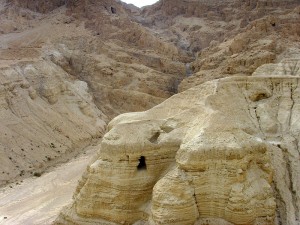Buyer Beware! How Forged Dead Sea Scrolls Were Exposed by High-Tech Tests
 The full release in 1991 of the Dead Sea Scrolls from the cabal of Christian scholars who held onto their rights of access and publication set off an amazing series of academic achievements: the full publication of the Scrolls by an expanded international team, of which I had the privilege of being a member, and the availability of the entire photographic archive on the websites of the Israel Antiquities Authority and the Israel Museum. These important achievements sparked an enormous amount of new research on Judaism in the Bayis Sheini period. This research extended to all areas: Biblical studies, literature, history and archaeology.
The full release in 1991 of the Dead Sea Scrolls from the cabal of Christian scholars who held onto their rights of access and publication set off an amazing series of academic achievements: the full publication of the Scrolls by an expanded international team, of which I had the privilege of being a member, and the availability of the entire photographic archive on the websites of the Israel Antiquities Authority and the Israel Museum. These important achievements sparked an enormous amount of new research on Judaism in the Bayis Sheini period. This research extended to all areas: Biblical studies, literature, history and archaeology.
But the renewed interest in the ancient scrolls discovered at Qumran (probably Biblical Sechachah; Yehoshua 15:61) on the western shore of the Dead Sea brought with it a dark side as well. Collectors, most of whom were Evangelical Christians seeking to connect tangibly with the Bible, began to attempt to purchase fragments of Dead Sea Scrolls manuscripts. Several individuals and institutions bought such fragments, believing that they were buying the real thing. Millions of dollars were paid by these collectors and institutions. Today, some 70 fragments have been identified as having surfaced on the antiquities market from 2002 on. But as we recently heard in a press release issued on October 22 by the Museum of the Bible in Washington, DC, regarding five of their own fragments, many if not all of these 70 fragments are almost certainly modern forgeries.

Leave a Reply